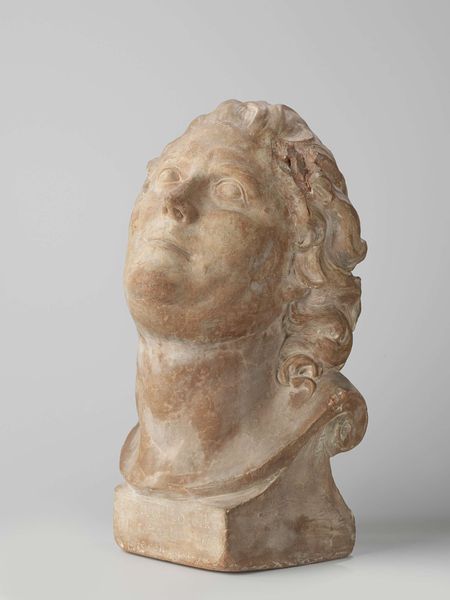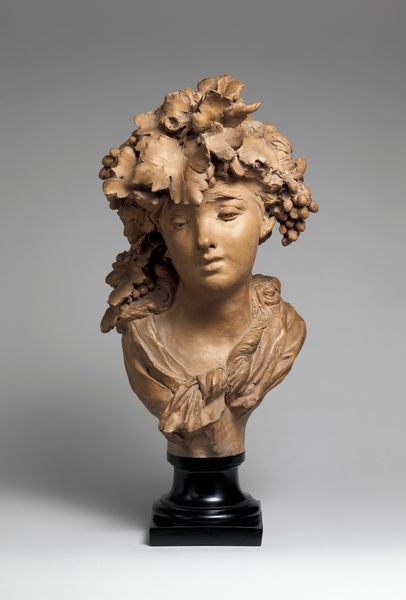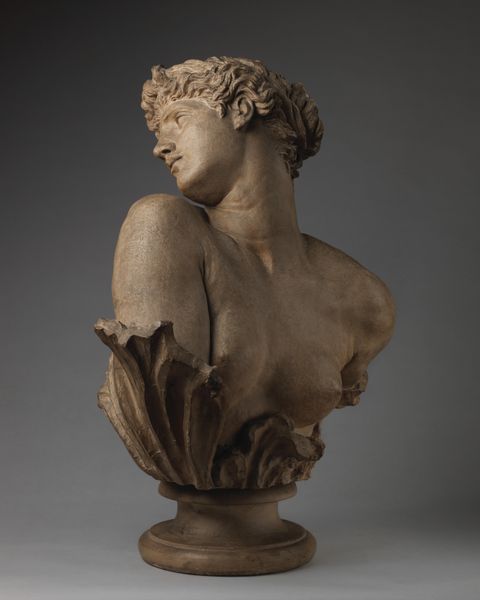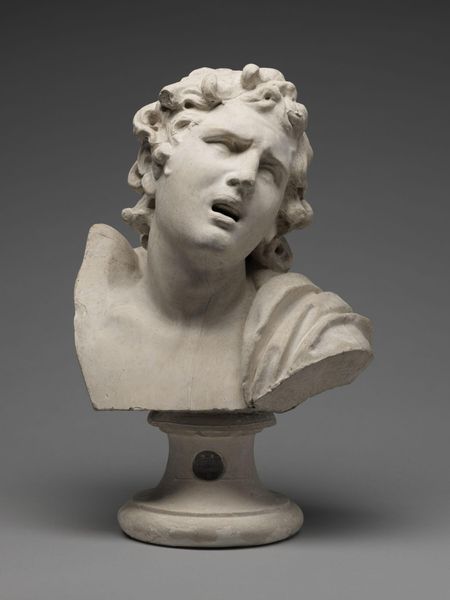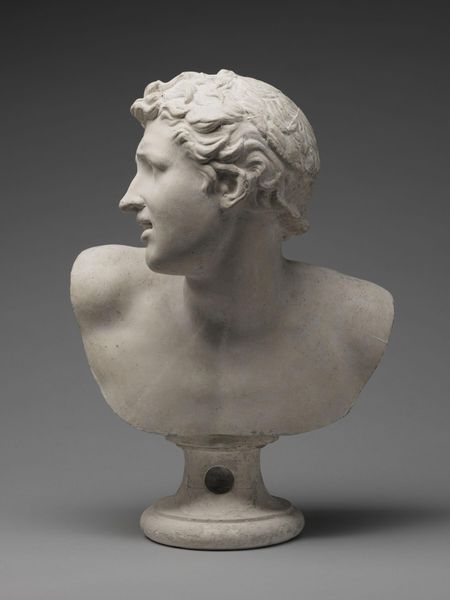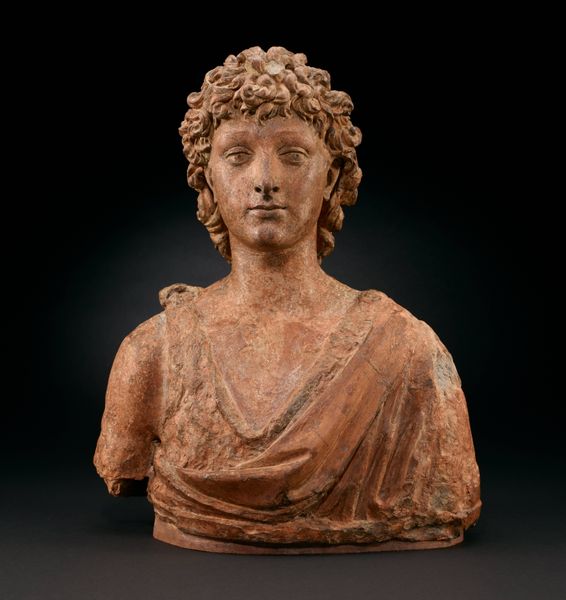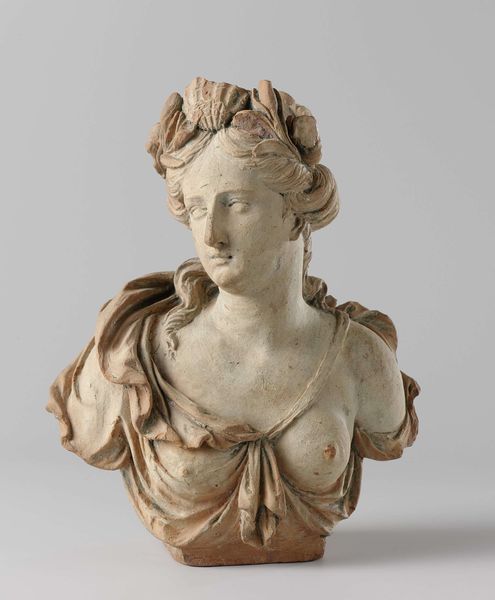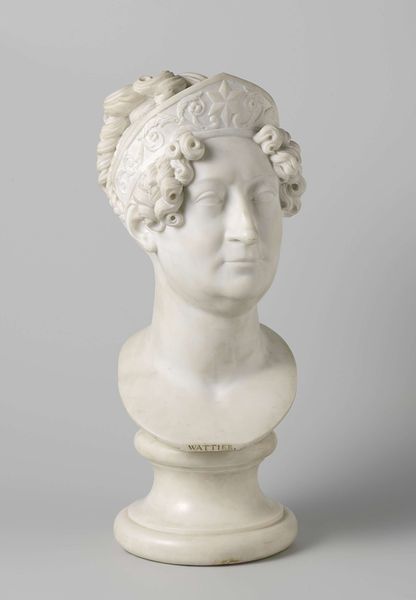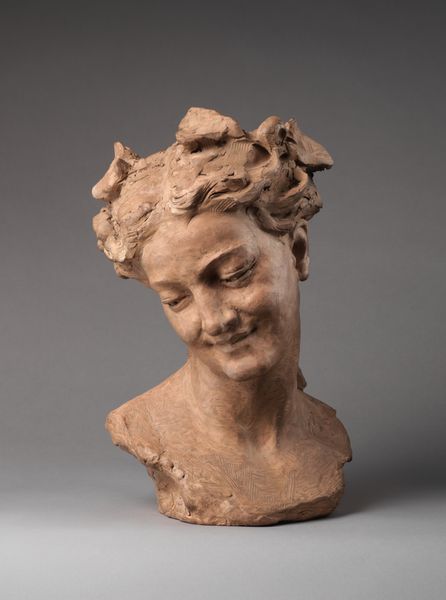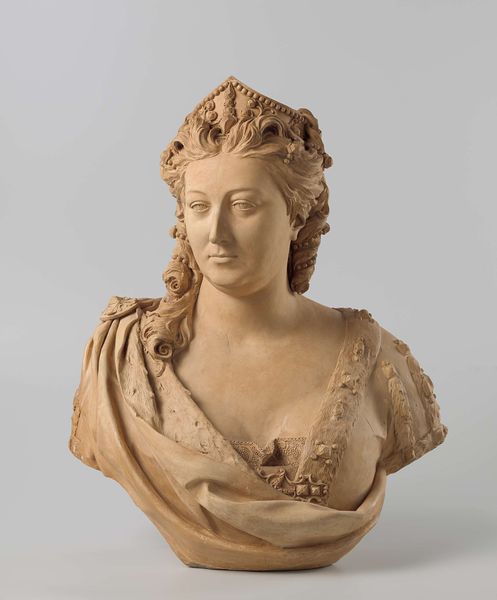
sculpture, marble
#
portrait
#
neoclacissism
#
head
#
sculpture
#
classical-realism
#
sculpture
#
mythology
#
marble
Dimensions: H. 31 cm (12 .20 in.) (without socle); H. 52.25 cm (20.57 in.) (with socle); W. 31.75 cm (12.5 in.); D. 30.5 cm (12 in.)
Copyright: Public Domain
Antonio Canova carved this Head of Medusa from marble sometime in the late 18th or early 19th century. Marble is the hero of this story, if you ask me. It's a metamorphic rock, formed under intense heat and pressure, then quarried from the earth. To work it, Canova would have used a variety of tools: saws, chisels, rasps, and drills. The whiteness of the marble gives the sculpture its clean, classical look, while its fine grain allows for incredible detail, visible here in the snake-like locks of hair. But the real magic is how Canova manipulated the surface, creating a subtle play of light and shadow. Marble dust was often used at the end of the carving and polishing process to create a perfectly smooth surface, bringing out its inner luminosity. This smoothness invites touch, yet the Medusa's petrifying gaze warns us to keep our distance. In the end, understanding the material and processes behind it only deepens our appreciation. It reminds us that the concept of fine art is always entwined with labor, skill, and tangible substance.
Comments
No comments
Be the first to comment and join the conversation on the ultimate creative platform.

